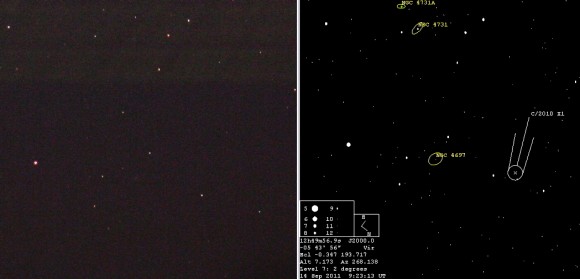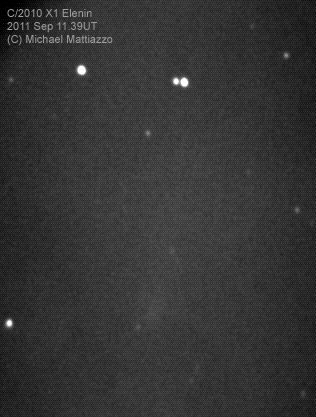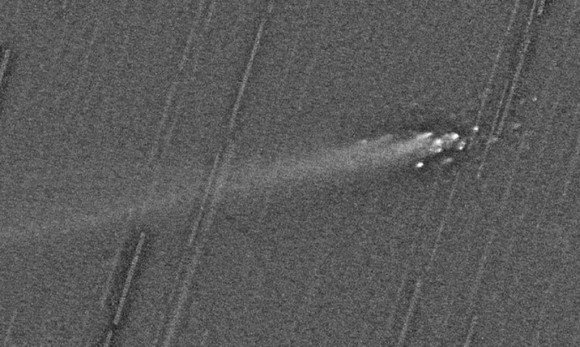
As far as Comet Elenin goes, the only chance of impending doom is for the comet itself: it is disintegrating and quickly fading away. Australian amateur astronomer Michael Mattiazzo has been monitoring this comet's trip toward perihelion (closest point in its orbit to the Sun), which occurred on September 10, 2011, and he says Comet Elenin has likely has not survived. The image above was taken by Mattiazzo on today (Sept. 14) and it is barely visible as a disintegrating smudge.
Comet Elenin - the comet that has created a hoopla of completely nonsensical, non-scientific doomsday predictions - faded dramatically after being hit by a solar flare on August 20, as we reported earlier. Subsequent images revealed a spreading, diffuse coma. It will likely continue to fade and become more diffuse.
Elenin's mass is smaller than average and its trajectory will take it no closer than 34 million km (21 million miles) of Earth as it circles the Sun. It will make its closest approach to Earth on October 16th, but was closest to the Sun on Sept. 10.
"On the night of August 19th, I estimated the brightness of comet Elenin as magnitude 8.1 and it was on target for naked eye observability in September," Mattiazzo wrote on his website, Southern Comets. "On the following night of the 20th, the comet had faded dramatically by half a magnitude and appeared more diffuse. This was a sign of impending doom for comet Elenin."
Elenin is at about magnitude 10 now, and fading as it is in the process of disintegrating.
It failed to recover, (you can see a series of images taken between August 19 and September 11 on Mattiazzo's website), with the comet's the nucleus taking on an elongated appearance with progressive fading.

One of the most spectacular examples of a comet breaking apart occurred in July 2000 when comet C/1999 S4 LINEAR disintegrated and several observatories had a good view of the action.




A lot of assumptions based on it being a comet.
Wait until it clears and is picked up by larger observatories before jumping to conclusions.